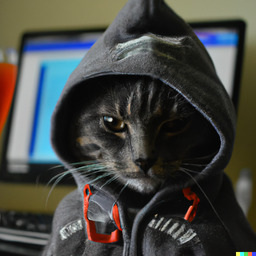WAT!? No internet!?
- 0 Posts
- 9 Comments

 1·2 months ago
1·2 months agoIt seems that we focus our interest in two different parts of the problem.
Finding the most optimal way to classify which images are best compressed in bulk is an interesting problem in itself. In this particular problem the person asking it had already picked out similar images by hand and they can be identified by their timestamp for optimizing a comparison of similarity. What I wanted to find out was how well the similar images can be compressed with various methods and codecs with minimal loss of quality. My goal was not to use it as a method to classify the images. It was simply to examine how well the compression stage would work with various methods.

 2·2 months ago
2·2 months agoWait… this is exactly the problem a video codec solves. Scoot and give me some sample data!

 1·2 months ago
1·2 months agoI was not talking about classification. What I was talking about was a simple probe at how well a collage of similar images compares in compressed size to the images individually. The hypothesis is that a compression codec would compress images with similar colordistribution in a spritesheet better than if it encode each image individually. I don’t know, the savings might be neglible, but I’d assume that there was something to gain at least for some compression codecs. I doubt doing deduplication post compression has much to gain.
I think you’re overthinking the classification task. These images are very similar and I think comparing the color distribution would be adequate. It would of course be interesting to compare the different methods :)

 31·2 months ago
31·2 months agoThe first thing I would do writing such a paper would be to test current compression algorithms by create a collage of the similar images and see how that compares to the size of the indiviual images.

 3·2 months ago
3·2 months agoDesktop Applications
Unless someone has registered the trademark for those specific purposes you’re clear. A trademarks is only valid within a specific field of purpose. Trademarks are there to avoid consumers mistaking one brand for another.
There are a lot of entertaining articles on Techdirt about companies not understanding trademark law.
There is no free and open source version of Only Office. It fakes that it is licensed with AGPL, but they have added the following to the license, which in effect completely forbid you to redistribute it. It can be said to be Source Available.
The interactive user interfaces in modified source and object code versions of ONLYOFFICE must display Appropriate Legal Notices, as required under Section 5 of the GNU AGPL version 3.
Pursuant to Section 7 § 3(b) of the GNU AGPL you must retain the original ONLYOFFICE logo in the upper left corner of the user interface when distributing the software.
Pursuant to Section 7 § 3(e) we decline to grant you any rights under trademark law for use of our trademarks.
https://raw.githubusercontent.com/ONLYOFFICE/DesktopEditors/master/LICENSE

It’s easy to overlook with the omnipresent internet, but self-hosting doesn’t require internet. You could host for your fellow students on the local network. If that’s also against the Wifi rules you can either ignore that stupid rule or set up your own god damn wifi with hostapd on your machine and let students connect directly to it. It’s probably best to use a machine dedicated to the task for security reasons as you wouldn’t want curious students to accidentally erase your homework. I wouldn’t use containers or VMs for any of this, I’d just use bare metal like in the good ol’ days. You could also, without having to worry, give people shell accounts because it’s a closed network. The options are endless without all the worries of hosting on the internet.